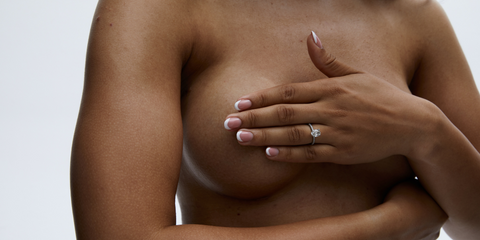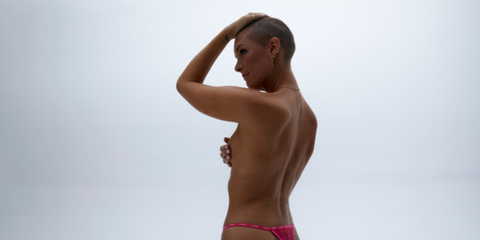Contents
Did you know that breast cancer is the most common cancer in the UK?
Almost 50,000 women in the UK are diagnosed each year, but like many forms of cancer, early detection is key. Spotting it early on increases your chances of survival.
Breast cancer can affect any woman (or man) of any age and at any point in their lives. This is why checking your breast health regularly is so important. Approximately 1 in 7 women and 1 in 100 breast cancer cases are men, which is why knowing how to check your breasts is crucial, Loungers.
Remember: Early. Detection. Saves. Lives.
With our #FeelYourBreast Campaign in full swing, we’re taking you through ways to check your breasts, what to look for and how to spot anything unusual. Not sure where to start? Don’t worry, we plan on being with you every step of the way!

WAYS TO CHECK YOUR BREASTS AND WHAT TO LOOK FOR
It’s not just lumps that you should be looking out for, Loungers. There are several other indicators of breast cancer that you should be keeping an eye out for too.
If you notice one or more of these symptoms, make sure you get in touch with your GP as soon as you can to get any concerns checked out.
- Puckering, dimpling or swelling in the breast, armpit or collarbones
- An unusual change in shape or size
- Nipple discharge
- Nipple inversion and changes in direction
GET TO KNOW YOUR BREASTS
All breasts are different, so whether you’re looking for lumps, bumps, swelling or just something out of the ordinary, it’s important for you to know what’s typical for you and what isn’t.
The good thing about checking your breasts is that you can do it anywhere, and it only takes a few minutes!
Whether you’re standing up or lying down, in the shower or in bed, you can do it whichever way suits you. In fact, it’s actually a good idea to check both standing up and lying down. It’s best to set a consistent date for regular checking. We suggest the first of every month, as you’re never bound to forget.
If you have periods, try to check a few days after your menstrual cycle to spot any unusual changes outside of your period.
TAKE A GOOD LOOK
Closely examine your armpits, across and beneath your boobs, pecs/chest and your collarbones – basically anywhere you have breast tissue. Feel free to use a mirror to check their appearance.
If you’re not too sure, here’s what you should be seeing:
- Breasts that are their usual size, shape and colour
- Breasts that are evenly shaped without visible distortion or swelling
MOVE AROUND
Take another good look at your breasts with your arms above your head and look for the same changes. Now, leaning forward, look for any dimpling, puckering, or bulging of the skin.

GET FEELIN’!
Using a flat palm or your fingertips, apply some pressure and use circular motions to check your breasts, chest or pecs. Many women prefer to feel using soapy or oily hands, but always do what makes you feel comfortable.
As you feel, be mindful of any irregularities. These could include:
- Lumps and thickening
- Constant or unusual pain
- Puckering or dimpling
- Changes in skin texture
Don’t forget to check all the key areas we mentioned above too. And that’s it, you’re all done! How easy was that?
If you still want help with how to check your boobs or you’re wondering where to access our handy online tool, head over to Breast Practice: The Experience.
WHAT SHOULD I DO IF I SUSPECT BREAST CANCER SYMPTOMS?
Remember: don’t panic. We know it’s easier said than done, but luckily, most lumps turn out to be non-cancerous.
However, if you do find any unusual changes, don’t delay getting them checked out. Remember, early detection saves lives. If your doctor suspects something unusual, you’ll be referred to a breast clinic for further investigation, where a breast health specialist will give you the advice and care you need. You’ve got this!
